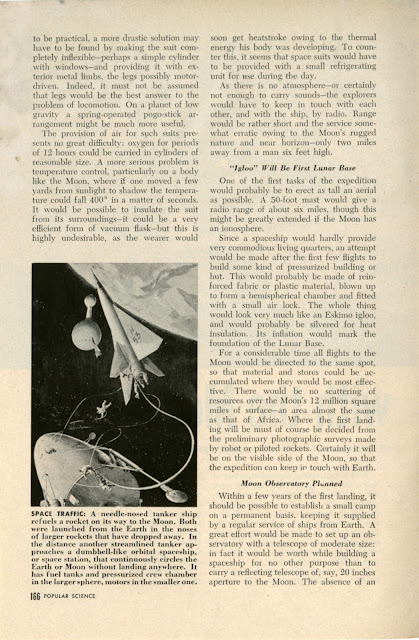
Happy Halloween and what can be spookier than a Moon we don't know what to do with and a dead artist?
From Popular Science April 1952. An interesting article by Arthur C. Clark about what the future might shape up to be. Clarke and the British Interplanetary society had been thinking about spaceflight for as long or longer than anyone in the world. The BIS came up with a plan for a manned rocket and how a moon colony might work. Many of these ideas we depicted by the great (lesser know) space artist Ralph Andrew (R.A.)Smith. Tragically he passed away in 1958, never seeing his images come to life.
http://www.bis-space.com/what-we-do/the-british-interplanetary-society/history/r-a-smith
R.A. Smith illustrated the BIS imagination much like Chesley Bonestell illustrated the imagination of von Braun and the American space fans. For more examples of Smith's work see these old posts:
http://dreamsofspace.blogspot.com/2009/02/daily-mail-annual-next-great-adventure.html
http://dreamsofspace.blogspot.com/2009/07/exploration-of-moon-1954.html
The "bug' lunar lander is another of those interesting features of the BIS vision. It looks much more realistic to us today than the oversized von Braun expedition vehicle.













































